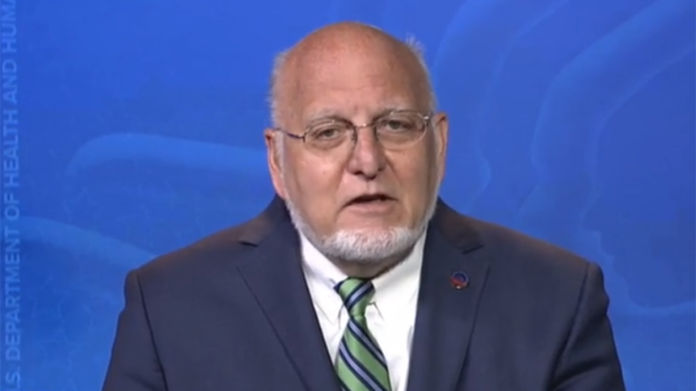The head of the Centers for Disease Control and Prevention (CDC) said Tuesday that he believes the U.S. is ready to begin reopening, even as he acknowledged the need to invest further in the nation’s public health infrastructure and expand contact tracing to avoid sustained outbreaks.
“I want to clarify that the community-based transmission, the community-to-community transmission that overwhelmed the public health departments in late February, March, April, that’s really coming down,” Redfield said in an interview with Steve Clemons, author of The Hill’s daily Coronavirus Report.
Redfield told The Hill that the CDC is working with state public health agencies to contain outbreaks in nursing homes, among homeless populations, in meatpacking facilities and in other areas. He signaled states will have sufficient testing and contact tracing to follow the White House’s guidelines for reopening.
The challenge, he said, will be ensuring the country has enough testing and contact tracing for a potential second wave of the virus in the fall and winter months, which would coincide with the annual influenza season.
Redfield said the CDC is looking to expand the contact tracing workforce by between 30,000 and 100,000 people. Experts have said hundreds of thousands of contact tracers will be needed nationwide to identify those who have been infected with the coronavirus and those with whom the infected person has come into contact.
“Ultimately, that number [of contact tracers] is going to be decided by the efforts that we have with the local health departments,” Redfield said. “But that’s ongoing now, and it needs to be in place, operationally ready by October of this year.”
The Trump administration announced in late April that it would be deploying roughly a dozen contact tracers from the CDC to each state, but many states have been ramping up their own recruiting efforts in the weeks since. The number of volunteers in each state varies. For example, 400 people have volunteered in Kansas, while 1,200 have come forward to help in Utah.
Redfield cited financial investments in state and local health departments, an increase in flu vaccinations among the American public, and an overhaul of public health data systems as key to ensuring the country is prepared to combat the pandemic in the months ahead. He acknowledged those investments will come with a hefty price tag — he estimated it could end up costing between $3 trillion and $6 trillion — but said preparations should be made sooner rather than later.
“It’s a small price to pay finally, once and for all, to stop talking about building the public health infrastructure this nation needs and, more importantly, deserves,” he said.
The CDC has come under criticism for its antiquated data collection and reporting system. Redfield earlier this month went back and forth with Deborah Birx, the coordinator of the White House coronavirus response, about the flaws in the system.
A CDC spokesperson said the two were in agreement on the need to improve the system, but the episode reflects the frustrations of some at the White House with the agency’s approach.
The CDC has faced criticism for its limited public visibility as states move to lift restrictions intended to slow the spread of the coronavirus. The agency last week released broad recommendations for businesses to use when reopening after the White House reportedly buried more detailed guidance.
By the time the scaled-down version was released, dozens of states had already allowed or were close to allowing businesses to reopen.
Redfield denied on Tuesday that politics influenced the final guidelines.
“This outbreak has gone from a CDC to an all-of-government response,” he said, saying the guidelines went through an inter-agency review process.
“One of the things that became clear at the task force when we put up our initial guidelines is a number of people criticized, and I think appropriately, that a lot of our guidelines are written in what they called CDC-eze, meaning that they’re not easy for the American public to actually get through,” he said. “And so the decision was, why don’t you guys do some decision trees that are simple one-pagers. You’ve probably seen them targeting the American public. And we released those six decision trees last week.”






